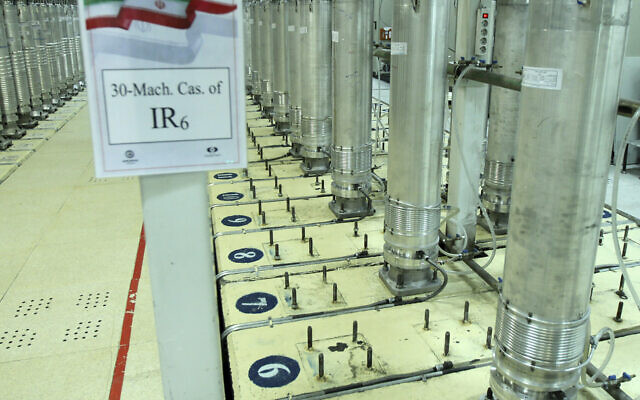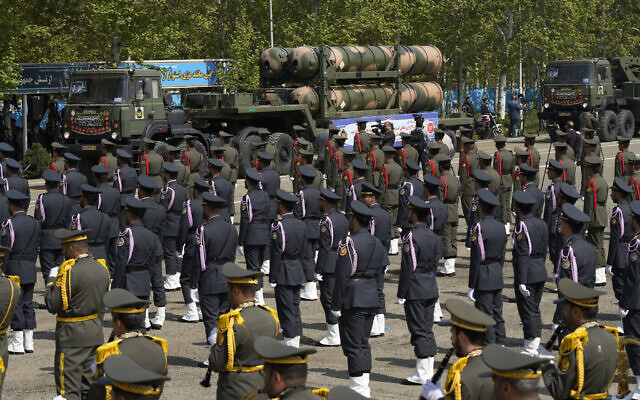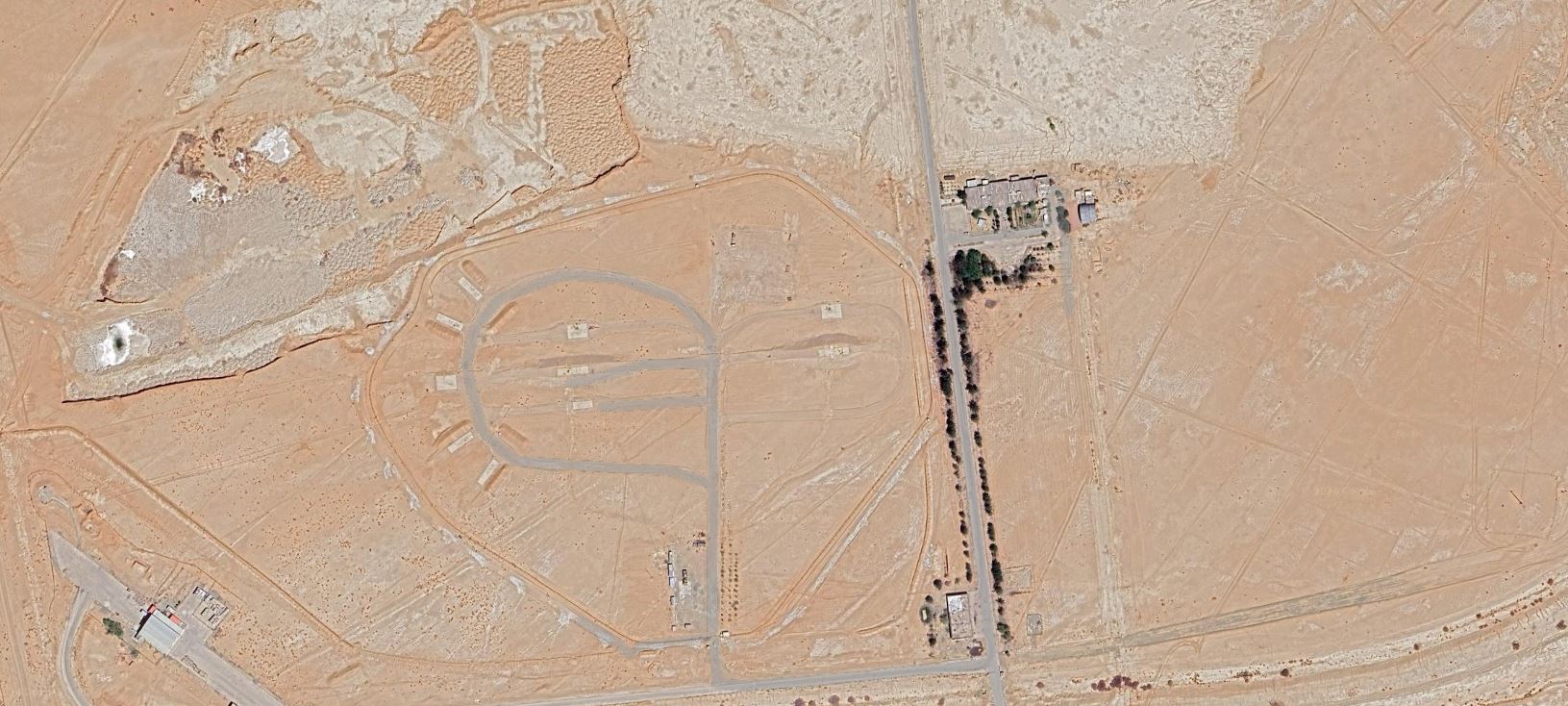In a recent development, Israel has been reported to have used a half-ton supersonic missile called the Rampage in its strike on Iran. The Rampage missile is designed to target ground facilities such as military bases and was allegedly used in an attack on a military base near Isfahan, Iran's second-largest city. Israel has not officially commented on the strike, while Iran has downplayed the incident and insisted that only three small drones were involved in the attack on Isfahan. The Rampage missile was unveiled in 2018 and was designed to penetrate into and destroy protected areas like bunkers. The Israeli strike comes amidst heightened tensions between Israel and Iran, with Iran having launched a missile and drone barrage last weekend in retaliation for an earlier Israeli attack on Iranian targets. The US, Israel, and Iran have all been cautious about escalating the situation through words or actions. Meanwhile, satellite images appear to show significant damage to a radar system near an Iranian nuclear site after the alleged Israeli strike last week. The destroyed remains of an anti-aircraft mobile radar station were visible in the satellite image, while before the attack, the same 'flap-lid' radar was intact and surrounded by Russian-made S-300 missile launchers and other vehicles. Hours after the attack, at least three of the missile launchers had been returned to their positions.
Israel Allegedly Uses Rampage Missile in Strike on Iranian Military Base Near Isfahan
Isfahan, Iran, Iran Iran (Islamic Republic of)Israel allegedly used a Rampage missile in a strike on an Iranian military base near Isfahan
Significant damage was reportedly caused to a radar system near an Iranian nuclear site after the attack
The Rampage missile is designed to target ground facilities and penetrate protected areas






Confidence
81%
Doubts
- The accuracy of the report that Israel used a Rampage missile in the attack
- The extent of damage caused by the strike and its impact on Iranian military capabilities
Sources
85%
Satellite image appears to show damaged Iranian radar allegedly struck by Israel
The Times of Israel Sunday, 21 April 2024 16:28Unique Points
- An image showed significant damage to a radar system near an Iranian nuclear site after an alleged Israeli strike last week.
- The destroyed remains of an anti-aircraft mobile radar station were visible in the satellite image.
- Before the attack, the same ‘flap-lid’ radar was intact and surrounded by Russian-made S-300 missile launchers and other vehicles.
- Hours after the attack, at least three of the missile launchers had been returned to their positions.
Accuracy
- Israel used a high-tech missile that was able to evade Iran’s radar systems in the attack.
- The S-300 air defense system at an Iranian air base in Isfahan was hit by the Israeli missile.
- Iran continued to insist that only several small drones were launched and caused no damage, but debris found in Iraq suggested otherwise.
Deception (35%)
The article provides satellite images that show damage to an Iranian radar system, which the author claims was struck by Israel. However, there is no direct evidence provided that links these images to an Israeli attack. The author also quotes unnamed Western officials and Iranian officials who provide conflicting accounts of the events. This creates a misleading narrative without providing clear evidence of Israeli involvement in the strike.- The destroyed remains of what was reported to be an anti-aircraft mobile radar station could be seen in the satellite image published by Iran International, with the ground around it charred black.
Fallacies (100%)
None Found At Time Of Publication
Bias (100%)
None Found At Time Of Publication
Site Conflicts Of Interest (100%)
None Found At Time Of Publication
Author Conflicts Of Interest (0%)
None Found At Time Of Publication
95%
Report: Israel used air-to-surface missile called ‘The Rampage’ in Iran attack
The Times of Israel Sunday, 21 April 2024 16:29Unique Points
- Israel used a locally-developed air-to-surface missile called The Rampage in an alleged attack on a military base near Isfahan, Iran
- The Rampage is a 4.7-meter (15-foot) rocket that can travel at supersonic speed and weighs over half a ton
- The missile was designed to penetrate into and destroy protected areas like bunkers
Accuracy
- The S-300 air defense system at an Iranian air base in Isfahan was hit by the Israeli missile.
- Israel used a high-tech missile that was able to evade Iran’s radar systems in the attack.
Deception (100%)
None Found At Time Of Publication
Fallacies (85%)
The article contains an appeal to authority and inflammatory rhetoric. It also presents a dichotomous depiction of the incident by only reporting on Israel's alleged attack without considering Iran's counter-claim.- > The Kan broadcaster reports that The Rampage was identified from photos and also matches the extent of the damage caused in the attack.
- > Israel has not officially commented on the strike, while Iran has downplayed the incident and insisted that only three small drones — and no missiles — were involved in the attack on Isfahan.
- > The report cited officials as saying that the move was
Bias (100%)
None Found At Time Of Publication
Site Conflicts Of Interest (100%)
None Found At Time Of Publication
Author Conflicts Of Interest (0%)
None Found At Time Of Publication
100%
Israel hit Iran with a half-ton supersonic 'Rampage' missile, report says
Business Insider Rebecca Rommen Sunday, 21 April 2024 16:29Unique Points
- Israel used a long-range, supersonic ‘Rampage’ missile in its strike on Iran
- The Rampage missile is designed to strike ground targets such as military bases
- The Rampage can be fired from an aircraft or as a stand-alone system and uses GPS/INS guidance navigation and anti-jamming capabilities
- Israel's strike on Iran was intended to show Tehran that it could evade its air defense systems undetected
Accuracy
No Contradictions at Time Of Publication
Deception (100%)
None Found At Time Of Publication
Fallacies (100%)
None Found At Time Of Publication
Bias (100%)
None Found At Time Of Publication
Site Conflicts Of Interest (100%)
None Found At Time Of Publication
Author Conflicts Of Interest (100%)
None Found At Time Of Publication
99%
5 new mysteries and thrillers for your nightstand this spring
National Public Radio (NPR) Bethanne Patrick Wednesday, 17 April 2024 00:00Unique Points
- In Plumpton, Texas, Lucy Chase is suspected of murdering her best friend Savannah Harper.
- Lucy has never been formally charged with the murder but was convicted by the community.
- Listen for the Lie by Amy Tintera is a debut novel for adults from a bestselling YA author.
Accuracy
No Contradictions at Time Of Publication
Deception (100%)
None Found At Time Of Publication
Fallacies (95%)
The article contains some instances of inflammatory rhetoric and appeals to authority, but no formal or blatant logical fallacies were found. The author expresses her opinions about the books and their authors in a subjective manner, which is expected in a book review.- ][author]'s debut centers on a young woman named Katherine 'Kat' Bird, who has a near-death experience after her car collides with a deer, and wakes to near-total amnesia. She remembers her twin sister, Jude, who tries to fill in all of the blanks in Kat's memory, but as Kat slowly recovers, she realizes Jude's recounting of events contradict her own.[[/1],
Bias (100%)
None Found At Time Of Publication
Site Conflicts Of Interest (100%)
None Found At Time Of Publication
Author Conflicts Of Interest (100%)
None Found At Time Of Publication
91%
The unspoken story of why Israel didn’t clobber Iran
The Fixing Site: A Summary of the Article. David Ignatius Friday, 19 April 2024 23:10Unique Points
- Israel and Iran were maintaining silence to prevent escalation after Israeli strikes near Iranian city of Isfahan
- Israel gained support from the Group of Seven advanced industrial nations after absorbing Iran’s missile assault and appearing as a master of high-tech defense
- Israel is behaving like the leader of a regional coalition against Iran, considering interests of its allies in this coalition such as Saudi Arabia, UAE, Jordan
Accuracy
No Contradictions at Time Of Publication
Deception (70%)
The article by David Ignatius contains editorializing and selective reporting. The author expresses his opinion on the situation between Israel and Iran, implying that Israel's actions were strategic and calculated to maintain 'escalation dominance'. He also implies that Israel is now a leader of a regional coalition against Iran, which is not explicitly stated in the article. Furthermore, he selectively reports details about the recent conflict between Israel and Iran, focusing on Israeli actions while downplaying or ignoring Iranian actions. For example, he mentions that 'Israel absorbed the blow' from Iran's missile assault but does not mention that this was a response to Israeli strikes on Iranian military leaders in Syria. He also states that 'Israel gained another precious asset. After absorbing Iran’s missile assault so deftly, it’s seen as a victim of attack and a master of high-tech defense.' This implies that Israel's actions were successful and effective, but he does not provide any evidence to support this claim.- It landed the first word and the last one.
- Israel is behaving like the leader of a regional coalition against Iran.
- Israel absorbed the blow...
- One rule for containing a crisis is to keep your mouth shut...
Fallacies (90%)
The author makes an appeal to authority by quoting Mark Rothko and Dennis Ross. However, these quotes do not directly support the author's argument and are used to add credibility rather than provide evidence or logical reasoning.- Mark Rothko said in explaining why he stopped titling his paintings: ‘Silence is so accurate.’
Bias (95%)
The author expresses a clear preference for Israel's 'measured response' and its 'new shape of the Middle East', implying a positive view towards Israel and its allies. He also criticizes Iran for not wanting an escalation, which could be seen as biased against Iran.- Biden needs to help Israel end the war in Gaza and, with Arab help, find a pathway to an eventual Palestinian state.
- Israel wanted the last word in this exchange, and it seems to have succeeded.
- This ripening friendship between Israel and its former adversaries in the region must remain unspoken.
- We’re moving, at last, toward ‘the day after.’
Site Conflicts Of Interest (100%)
None Found At Time Of Publication
Author Conflicts Of Interest (100%)
None Found At Time Of Publication